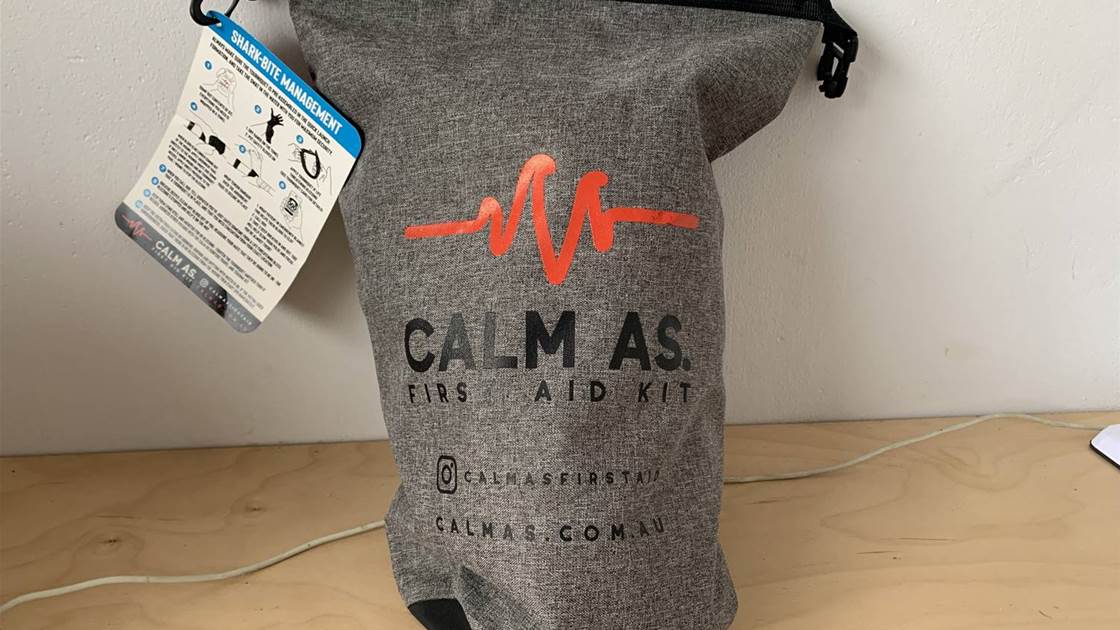
From a fellow ED Doctor, Luke Kennedy, who lives the reality of treating shark bites comes an insightful, honest and glowing review on Tracks Mag of the Calm As… Shark Bite Slam Pack.

From a fellow ED Doctor, Luke Kennedy, who lives the reality of treating shark bites comes an insightful, honest and glowing review on Tracks Mag of the Calm As… Shark Bite Slam Pack.
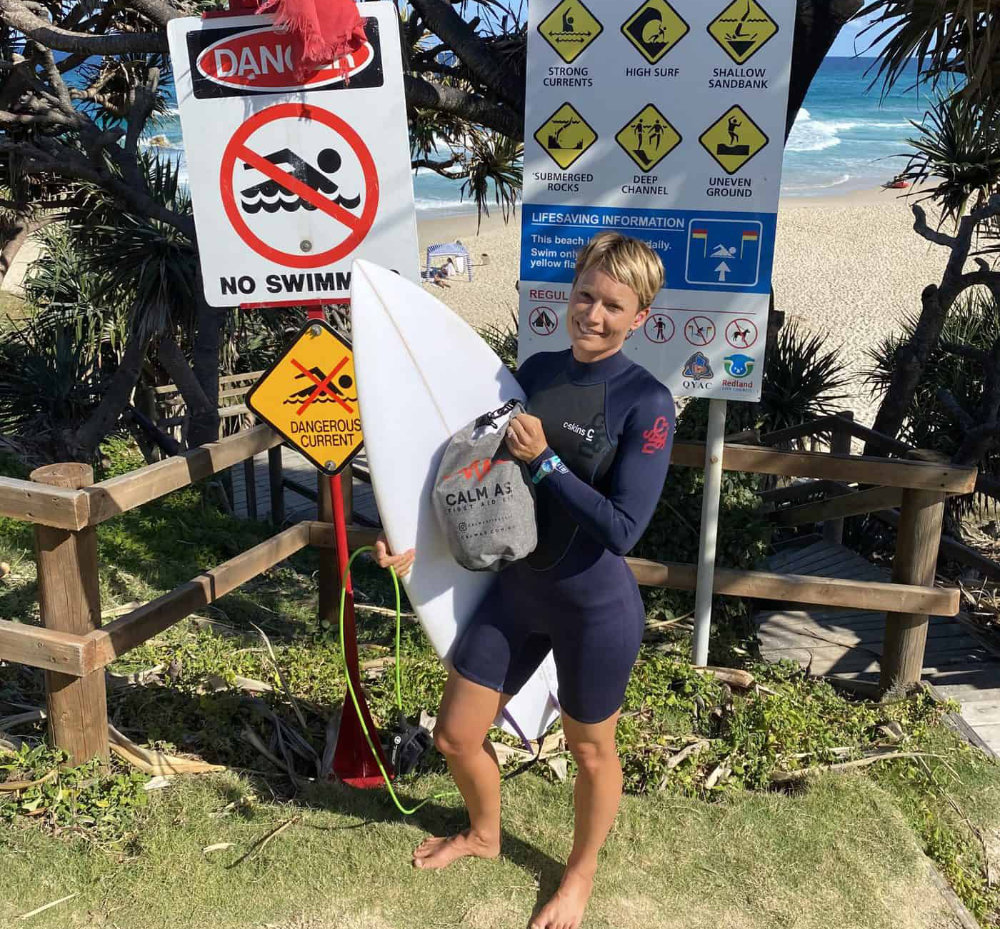
In their recent article, Shark Attach First Aid Slam Pack, Australia Wide First Aid takes a deep dive into the movie and historical lore of shark attacks.
They look at what types of sharks bite who, plus some very useful tips on dealing with the various aspects of shark attacks.
They also take some time to talk to Dr Jon Cohen about his new Calm As…Shark Bite First Aid Slam Pack. He succinctly sums up the value of having the kit on hand the next time you hit the surf.
You can bleed out from an amputated limb in under 5 minutes. Bleeding needs to be stopped ASAP.
“It’s the simplest thing you can do,” says Dr Cohen, “to save someone’s life.”
The kit is designed for immediate action to achieve just one goal: stop the victim bleeding out.
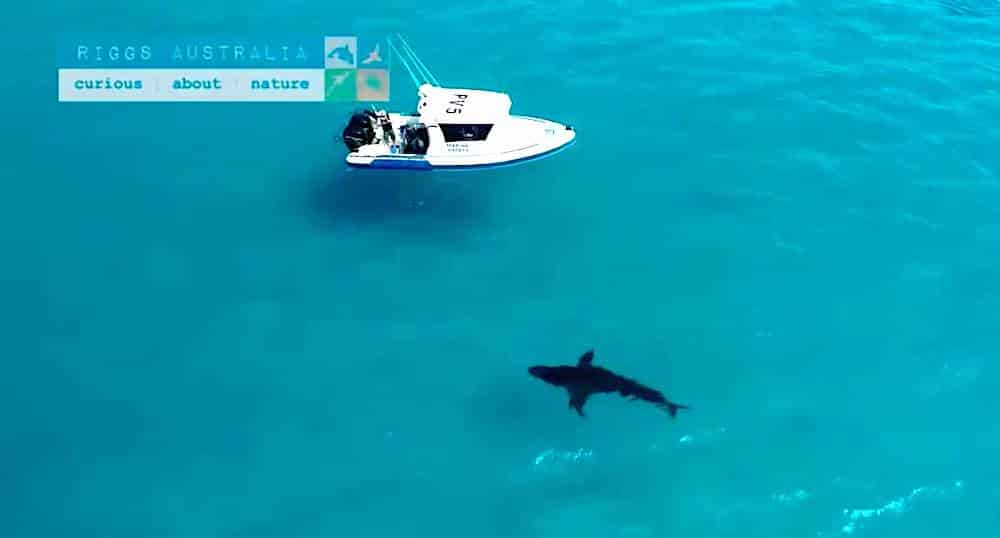
Beach Grit broke the story on the surfer killed by suspected great white at Kelpies, Esperance; the same beach teenage surfer killed by great white in 2017 and where surfer lost both arms to great white in 2014.
He talks to Dr Jon Cohen who knows hits by Great Whites in Esperance are a new reality.
“I know some guys who were in the ED that day (Laeticia Brouwer was killed) and it was a traumatic experience to manage. Cases like that are preventable deaths. People can act on the beach if they’re there when it happens. It might be scary to talk about but it’s reassuring to know that there is something you can do and it’s not complicated.”

As part of Magic Seaweed’s Surf Doctor series, SA local Craig Jarvis has been tapping up the world’s best surfing doctors on what to do in some of the most dire situations you, or a friend, might find themselves in.
In his article How To Survive a Shark Attack, Craig interview’s Dr Jon Cohen and tackles some critical scenarios such as:
The article was also featured on:
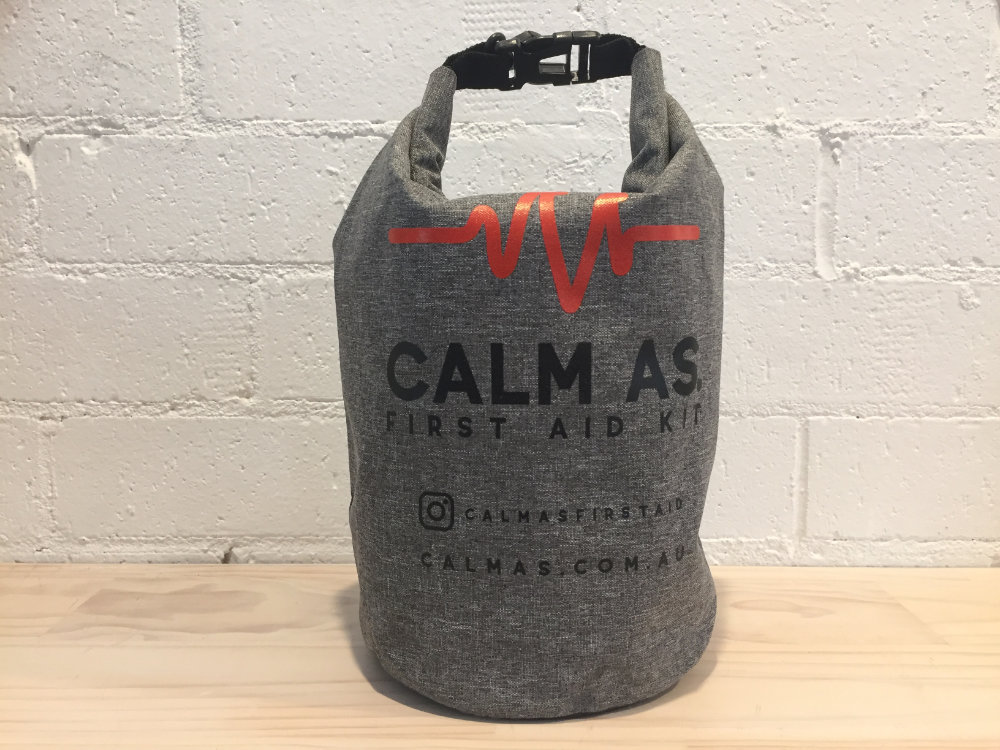
The new Calm As… Shark Bite First Aid Slam Pack was just featured on swellnet where an avid and experienced crowd has taken quite an interest.
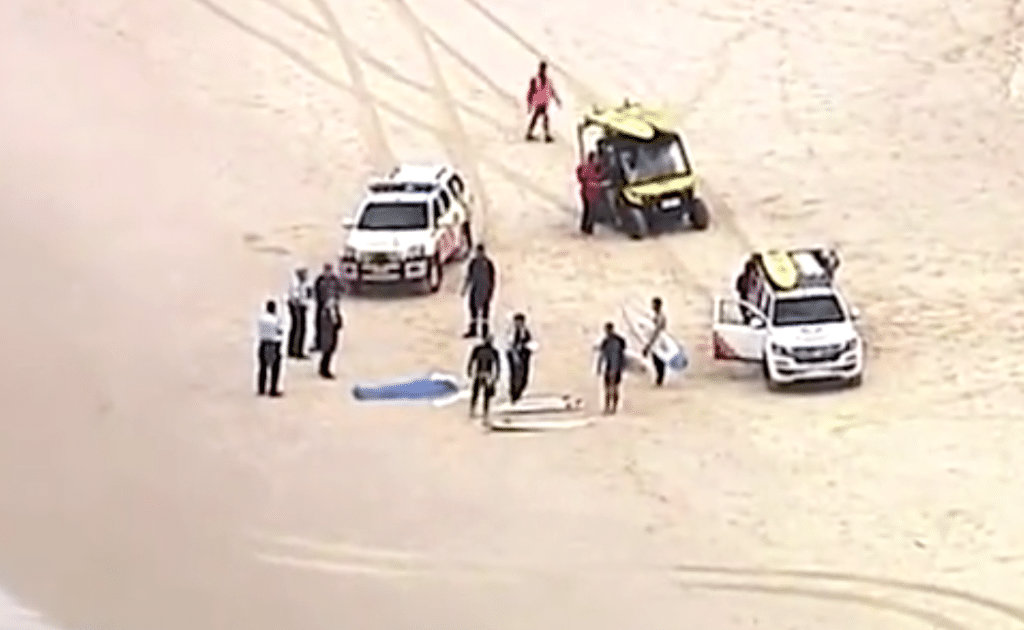
Dr Jon Cohen of Calm As First Aid Kits was interviewed on Beach Grit following the fatal shark attack of surfer Robin Pedretti on the Gold Coast.
A catastrophic attack and your buddy is going to lose consciousness in three minutes; after five minutes the outcomes are poor, says Cohen.
“Once someone goes into hypovolemic shock a cascade of bad things happen in your body. It decreases your chance of survival,” says Cohen. “In all of the tactical combat critical care, in military areas, wherever there’s mass casualties, big shootings, bombs, massive car crashes, the only thing that’s indicated to do before anything else is to get on the tourniquet.”
On asked if being trained in the use of tourniquets is the new CPR.
“There’s still going to be a lot more people during of heart attacks, and that’s true in the surf,” he says, “But if you’re surfing with your family, your kids, some group of buddies, getting the crew together to make sure they know what to do, giving it thought, having a strategy of what to do is part of your risk assessment when surfing sharky spots.”

Dr Jon Cohen of Calm As… was just featured on Beach Grit in their article, No-leg-still-smiling: The $30 device that can save a surfer’s life even after great white hit!
The article discusses an interview with former world number sixteen surfer Mitch Thorson who gave a nod to Jon’s recent “Shark Bite Management Demonstration” at Margaret River.
Hopefully, this date marked the start of a new era of collaboration between West Wetsuits, the Surfing Doctors and Calm As…First Aid.
It was the first time that Calm As founder Dr Jon Cohen, and his long-time friend and colleague Dr Phil Chapman (founder of the Surfing Doctors) had the chance to bring their knowledge of haemorrhage control and shark bite management to non-medically trained members of the local surfing community.
The event was kindly hosted by John Dutts and Nathan Rose at the Factory in Margaret River, with food, drink and publicity provided by Mitch Thorson and the rest of the team at West Wetsuits.
Despite being thrown together at the last minute to coincide with an impromptu trip to the southwest, Mitch, Dutts and Rosey managed to get the word out their to their core local crew and about 30 people showed up to have a go at stopping the blood gush from the model amputated leg Jon brought over from Sydney.
The mood was kept pretty light considering the heavy topics under discussion. Pretty much everyone in attendance had at least one “story”, or near encounter. For the most part, people who wanted to talk could share their stories, and people who didn’t really feel like speaking up could just take it all in.
Some of the principles in the lecture given by Drs Cohen and Chapman had been shared at Surfing Doctors, BWRAG and Stop the Bleed hospital lectures given previously, but others were really specific for the situation down in Margs. This is where the public forum of these events really shines – a lot of people love to learn and experience through screens, but being at a small event, sharing stories with your local crew transcends simple knowledge sharing. It creates communities of people with knowledge, tools and mindset to act when things go wrong.

Manly, Australia – Due to popular demand, the Calm As… First Aid Kits For Surfers have been revamped, and the new-look kits are already available for sale here https://bettersurf.com.au/
The Calm As… First Aid Kits For Surfers came about as a collaboration between a number of Doctors with one thing in common – they all surfed. In fact they were all members of the Surfing Doctors – a close-knit group of like-minded individuals who have filtered out of various specialties and areas of medicine to combine the love of two totally different passions; the surfing sport and lifestyle, and a lifelong career in medicine.
Every year the Surfing Doctors gather in Grajagan to discuss various medical and surfing topics in their Annual Conference. Conference topics vary, but the conversations remain around medical procedures, emergency surgery, eye injuries and fin chops, as well as the latest surfboard technology and the best equipment needed to take on the fabled waves of Grajagan
It was while in the jungle that Dr Jon Cohen from Australia, along with the help of Dr Phil Chapman from South Africa, came up with the concept of Calm As… surfers medical kits that are specific for surfers when traveling into remote areas, and who might experience surfing or travel injuries.
The first edition of the Calm As.. First Aid Kits For Surfers were an immediate success, and as more information and knowledge came through from end-users, so Dr Cohen tweaked and updated the kit into this current iteration.
“We knew what most surfers would need in a medical emergency while in the jungle or off the beaten track, but we needed some more information as to the quantities of the gear they would get through when using the kit,” said Dr Cohen. “As a result we have increased the quantities of certain gear, including the basics like bandaids and alcohol wipes, as well as including some heavy duty gloves and reorganizing the layout of the kit for more intuitive use.”
“It’s been fun just slightly modifying the contents so that the kits fit a wider variety of needs than originally intended,” continued Dr Cohen. “We found that a lot of surfers were keen to have a kit sitting in their cars or utes after getting back from overseas for those unexpected accidents when kicking around home, or on mini road trips.”

“The ongoing support of Calm As… has been encouraging, and surfers have been quick on the uptake,” said Dr Cohen. “Those surfers who have dealt with medical emergencies before will feel comfortable with the contents of the kits, and those ones who find themselves in an emergency situation for the first time should be comfortable with the contents and the straight-forward instructions that come with it.”
The crew at Calm As… will be giving away a few of the kits online via their social media channels some time in the future, so check them out on Facebook and find them on Instagram on @bettersurfoz
The Calm As… first aid kits for surfers are available on http://www.localhost:10028
Join the newsletter here https://bettersurf.com.au/subscribe
and receive a free download of the Calm As…Instructional booklet.
During the Big Wave Risk Assessment Group’s (BWRAG) inaugural visit to Australia, Calm As…First Aid founder Dr Jon Cohen was fortunate enough to receive an invitation to not only attend the course, but share his medical expertise in the field of surfer’s first aid.
While Jon has done stints as the medic on duty at some reasonably heavy waves, teaching specifically Big Wave chargers posed a great opportunity to broaden the scope of his thinking.
People surf everyday. People don’t get to surf huge waves everyday. As an emergency doctor in Australian coastal towns, Jon gets to see minor surf injuries most days. With the number of cars and ladders out there, it’s most days he gets to see pretty significant trauma as well. But the number of serious surf injuries that come in? Probably not much more common than them running the Eddie.
The forces involved in Big Wave surfing are enormous. This opens up the possibility not just of drowning, spinal injuries, and head injuries, but also the incredible task of performing water rescue in extremely challenging environments. Emergent management like performing chest compressions can’t be performed on a ski sled. It’s pretty hard getting yourself onto a ski-sled with a dislocated shoulder. How do you immobilise someone’s C-spine when there are waves with 30 foot faces racing towards you?
The value of the BWRAG summits, it seems, is not just in the course, the content, the common language and practical skills stations that we run through. While all of those aspects were put together incredibly well, it was a lot of the stuff that happened between the lines that really made the experience next-level. The stories, the tips, the experience and the possibility for collaborating on new ways of thinking made the weekend really glow for me.
I focused my lecture time on a few things very real to Australian surfers – shark bite management and snake bite management. Pretty much everyone at the course left with a tourniquet to keep in their skis or cars, but more importantly the skills and mindset to use them should the need ever arise.
The lecture quickly shifted to my approach to the trauma patient. This was adapted from a general top to toe approach that we employ in the emergency department, but presented in a way that we can apply it on the shore, on a boat in the channel, or in dire straits, the back of a sled. Taking general skills that I almost take for granted after 10 years working in the Emergency Department as a doctor and applying it to a heavy situation with minimal resources was a great mental trip for me. It felt like a blessing to be able to put it together in a room full of Big Wave experts.
There was enormous interest when we shifted over to my preferred technique for popping a shoulder back in – scapular manipulation. Tom Carroll in particular was front and centre, clearly having been on more than a trip or two where someone in the lineup or in his camp was met with this common surfing injury. The surprise for me, was an amazing technique shared by Greg Long on how to pop your own shoulder back in, by yourself, in the water, in life or death, sink or swim situations. Hats off to you Mr Long, I’ve been spreading that technique around at nearly every lecture I do, of course citing it as the technique you taught me during my lecture on that amazing weekend down in Austinmer.